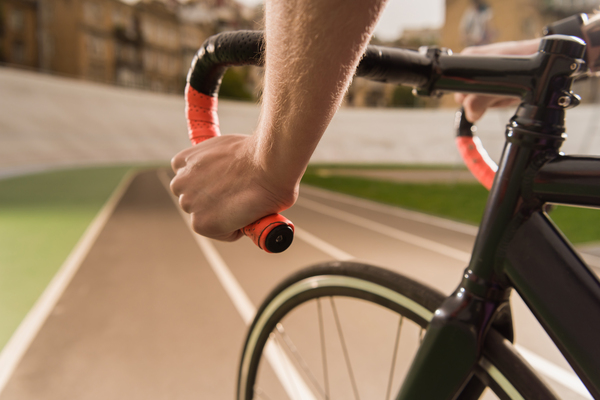There are many important tips below, but these are the most important:
Start by driving slowly. You don’t have to kill yourself at the very beginning. Even if you are already in good shape, cycling uses a different set of muscles and different exercises, and your body needs time to get used to new types of activities. Start riding just for fun. Only 2-3 miles in the beginning, no need to rush!

Safety first. More important than any other sport, cycling is about safety. Especially when you’re driving on a highway full of crazy drivers. Drive only during the daytime, obey the rules, always keep to the right side of the road, dress in brightly colored clothing, preferably with reflectors, and don’t forget to wear a helmet. Additional safety tips are listed below.
What bike to choose for cycling?
You can start with any old bike you have. Jokes aside. If you have one lying around in your garage, or you know who you can get it from, just inflate the wheels, make sure there are no holes in the chambers and that’s it. No need to buy something modern and expensive in the beginning.
Of course, professional cycling bikes are the best option, but they cost a thousand bucks (and some are twice as expensive) and are not so necessary in order to do cycling and enjoy them. If you have already mounted a bike, ridden for a while and are determined to do it, then, of course, you can buy a better bike.
Good cycling bikes are lightweight, have rigid frames, thin tires (to reduce friction), and a whole host of features to make for a fast and good ride. The most important thing is that the bike fits you. It should correspond to your height (height from the ground to the pelvis), in addition, the distance from the seat to the steering wheel should correspond.
What is the minimum amount of equipment needed for cycling?
Here is the list:
- Helmet. Never drive without it. This can mean the difference between a simple headache and eating through a straw for you. Make sure the helmet fits you.
- Water bottle. Always carry a bottle with you. For your information, usually the bottle is not supplied on the frame with the bike. You can also carry it with you in your backpack. If you’re driving for less than one hour, you won’t need it, but it’s best to have 1 just in case.
- Pump. It is very important to remember to take a portable pump with you, in case you have a puncture, or the tire simply deflates. You don’t want to walk back, do you? At home, of course, it would be nice to have a compressor to simplify inflation, but this is not so necessary.
- Repair kit. A simple glove box tool kit should include a repair kit, a spare tube, a pair of rim spokes, and an allen key.
What is the main key to success in cycling?
One of the main tasks is to constantly train. Ride a bike a lot and do it all the time. It saves money on gas, does not pollute the environment, and keeps you fit. And all in one bottle. What could be better?
